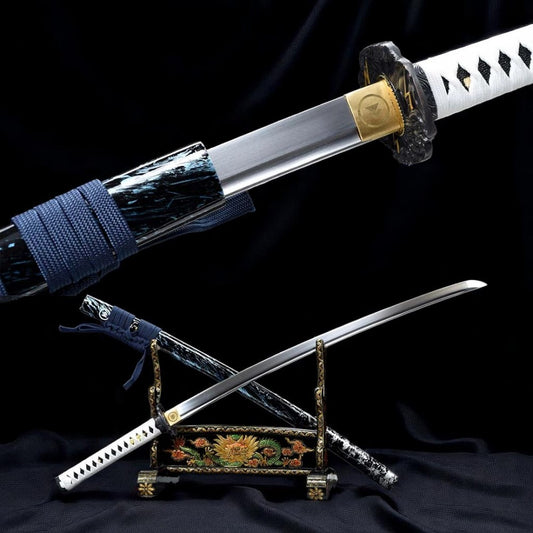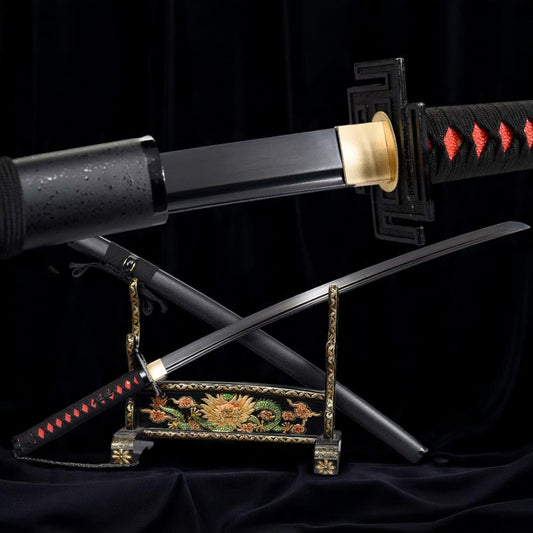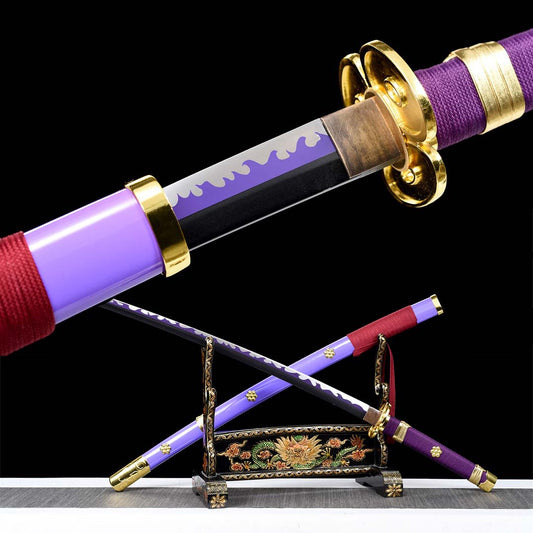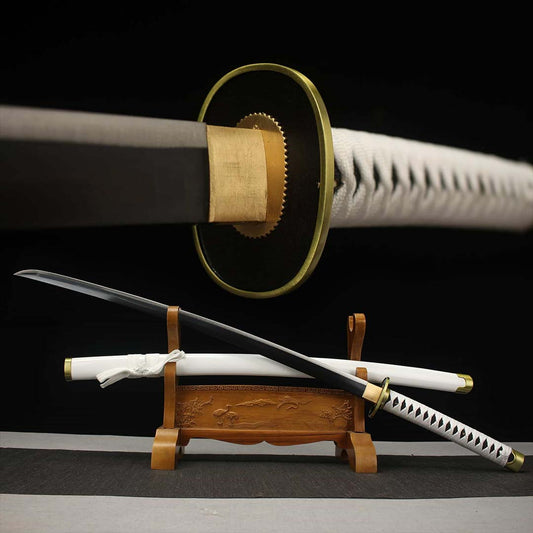
A Timeline of the Japanese Sword – Tachi, Katana, Wakizashi
Share
Introduction
The Japanese sword is more than a weapon — it’s a timeline carved into steel. From ancient battlefields to modern museums, these blades reflect the culture, craftsmanship, and warrior spirit of Japan. In this article, we walk you through a historical journey from the elegant Tachi, to the legendary Katana, and finally the compact Wakizashi.

1. The Tachi – The Predecessor (Heian to Muromachi Period, 794–1573)
Design: Deeply curved blade, worn edge-down with elaborate mounts.
Use: Cavalry weapon used by early samurai.
Significance: Symbol of rank, ceremony, and battlefield presence.
During the Heian period, the Tachi became the dominant sword among mounted warriors. Its edge-down suspension allowed for swift strikes from horseback. Ornate fittings and inscriptions often made the Tachi a status symbol among aristocrats and military leaders.
2. The Katana – The Iconic Blade (Muromachi to Edo Period, 14th–19th Century)
Design: Moderately curved blade, worn edge-up through the obi (belt).
Use: Main weapon for foot soldiers and samurai.
Significance: Balance of speed and control; became the samurai’s soul.
As combat shifted to foot-based encounters, the Katana replaced the Tachi for its faster draw and versatility. Its edge-up wear style allowed for rapid response, and its legendary sharpness cemented its place in samurai culture.
3. The Wakizashi – The Companion Sword (Edo Period onward)
Design: Shorter blade (30–60 cm), often paired with the Katana as a daishō (long-short set).
Use: Indoor combat, seppuku (ritual suicide), and self-defense.
Significance: Required sidearm for samurai — even when Katana was not allowed.
The Wakizashi was worn at all times by samurai, even in civilian settings where the Katana was forbidden. It symbolized readiness, discipline, and honor. Many Wakizashi featured intricate craftsmanship, reflecting personal style and status.

Bonus: Other Japanese Swords
- Chokutō (直刀): Straight-bladed sword used before the 9th century.
- Uchigatana (打刀): A more practical and battle-ready predecessor to the Katana.
- Nodachi / Ōdachi (野太刀 / 大太刀): Very long greatswords used in large-scale combat.
These variants contributed to the diversity of Japanese sword-making and combat styles across centuries.
Conclusion
The Tachi, Katana, and Wakizashi each represent a chapter in Japan’s history — from noble cavalrymen to disciplined samurai. Understanding their place in time reveals not only technical evolution but also deep cultural meaning. Whether you’re a history enthusiast or a collector, these blades are timeless symbols of Japan’s warrior heritage.
Discover our full Katana Collection or craft your own with the Katana Customizer.




